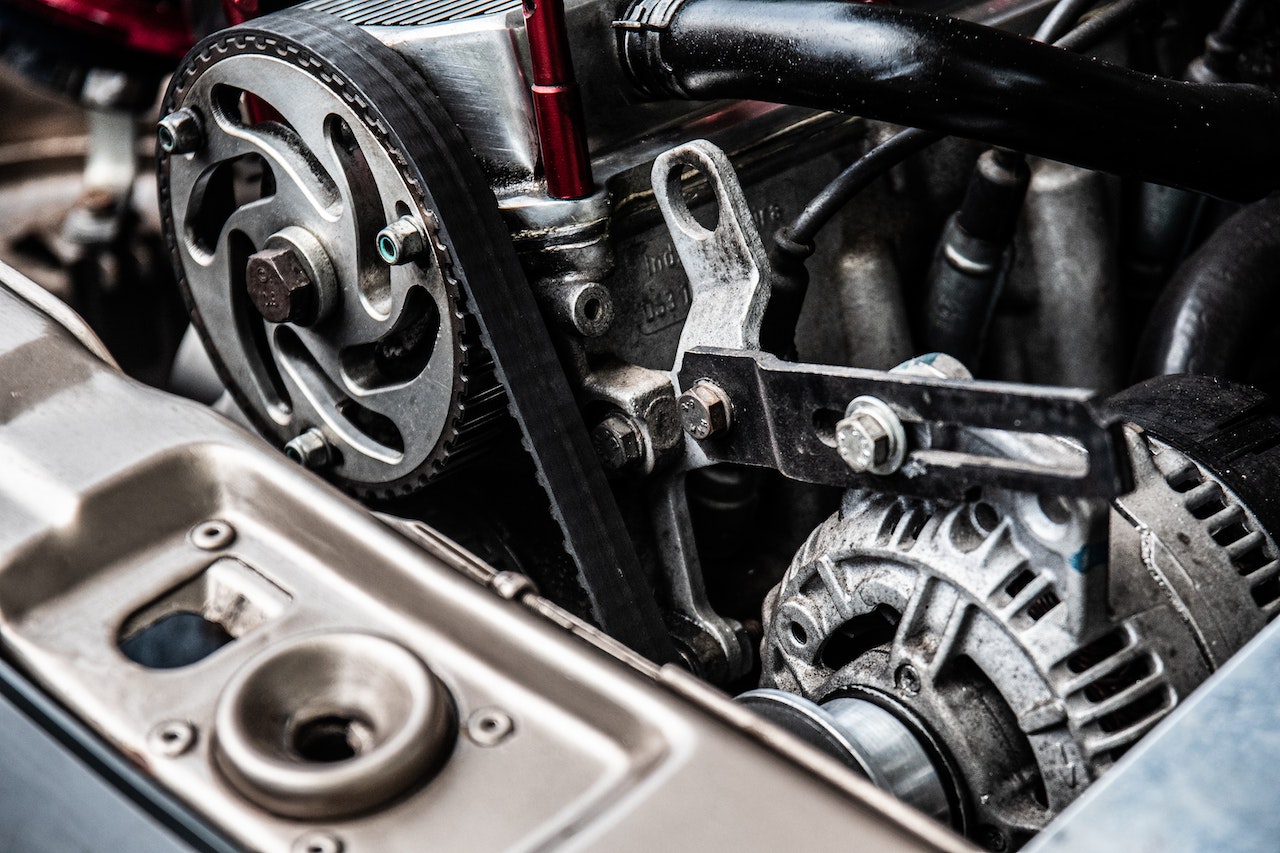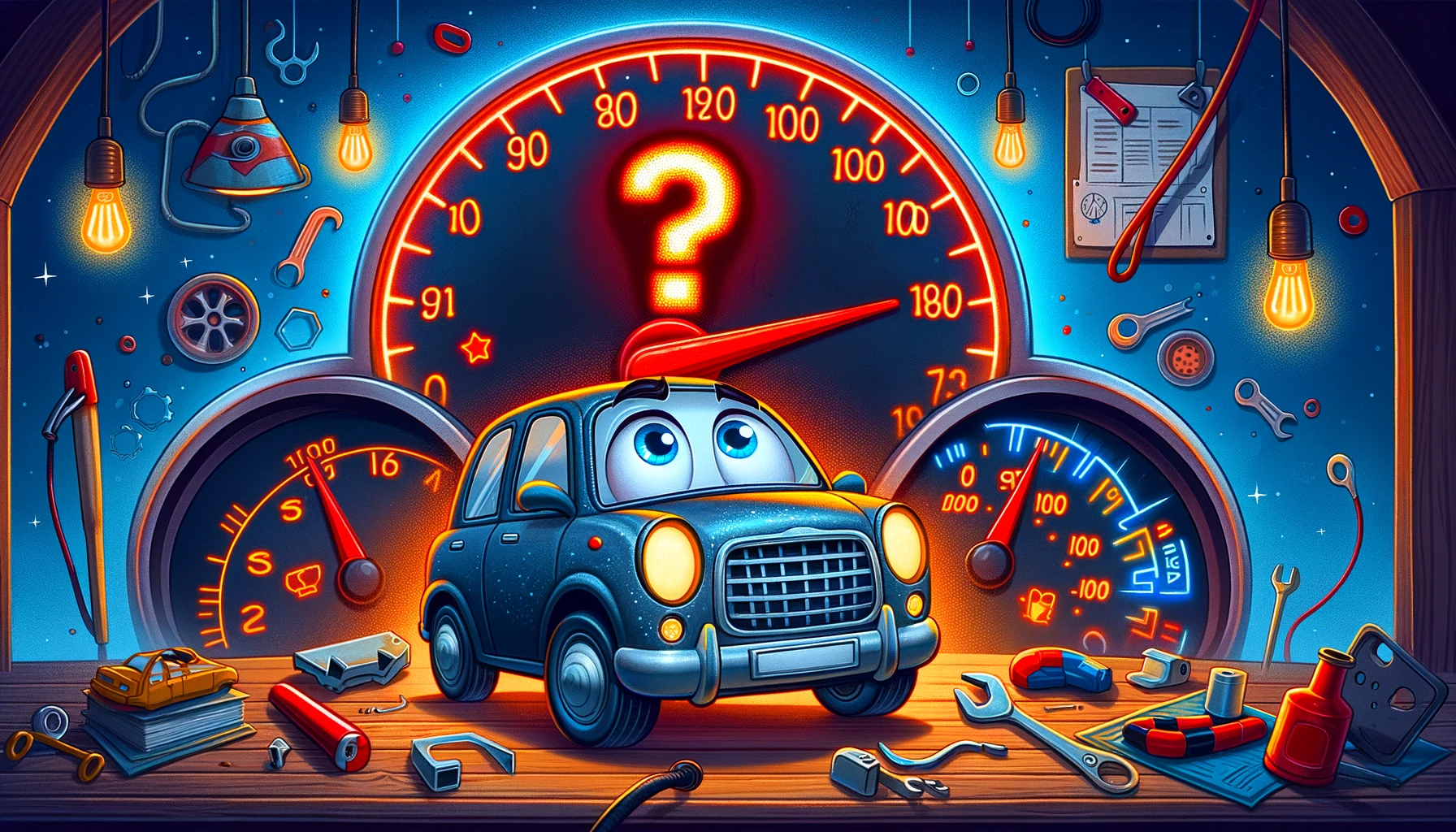The timing belt, that mysterious and elusive creature dwelling under the hood of your beloved automobile. You’ve probably heard whispers of its existence, possibly accompanied by ominous warnings of doom and despair should you neglect its wellbeing. But fear not, my dear friend, for today we shall embark on a quest to unravel the secrets of the timing belt, armed with humor, wit, and (surprisingly) genuine advice.
What on Earth is a Timing Belt?
First things first, let’s demystify this arcane component. The timing belt, my automotive comrades, is essentially the maestro of your car’s engine, conducting a symphony of pistons and valves with impeccable precision. It’s a toothed belt made of rubber and other materials, and its main gig is to synchronize the rotation of the crankshaft and the camshaft. In layman’s terms, it makes sure that the heart of your car beats in perfect harmony. Without it, your car would be as useful as a screen door on a submarine.
Now, you might be wondering, “Why on earth did car manufacturers decide to entrust such a crucial task to a rubber belt? Couldn’t they have used something a bit more robust?” Excellent question! The timing belt is lightweight, efficient, and operates quietly, making it the preferred choice for many vehicles. However, like all good things, it doesn’t last forever. And this, dear friends, is where the plot thickens.
When to Bid Adieu to Your Timing Belt?
The timing belt is not one for dramatic farewells or grand exits; it prefers to bow out discreetly, often taking your engine’s performance with it. So, how do you know when it’s time to replace this unsung hero of the automotive world?
The answer, unfortunately, is not as straightforward as we’d like. Car manufacturers typically recommend replacing the timing belt every 60,000 to 100,000 miles (100,000-160,000 km), but like any responsible adult, you should consult your vehicle’s manual for more personalized advice. Yes, that means actually finding and opening the manual, and not just using it as a makeshift stand for your coffee cup.
Neglecting to replace your timing belt can result in a catastrophic engine failure, and nobody wants that (except maybe your mechanic, who might be planning his next vacation). When the timing belt breaks, the pistons and valves lose their synchronicity, resulting in a metal-on-metal mosh pit inside your engine. And let me tell you, it’s the kind of party you want no part of.
Why Procrastination is NOT Your Friend:
Next, let’s delve into the thrilling world of timing belt replacement – a topic so riveting, it just might make you spill your coffee in excitement (or is that just the caffeine kicking in?).
Now, you might be thinking, “But I’m an expert procrastinator, and it’s worked out just fine for me so far!” Well, my friend, while procrastination might be your trusty companion in other areas of life, when it comes to timing belt replacement, it’s more like that flaky friend who always bails on you last minute.
The cost of replacing a timing belt is a small price to pay compared to the astronomical expense of repairing an engine that’s thrown a tantrum (and a few pistons) because of a neglected timing belt. It’s like choosing between paying for a regular dental check-up or waiting until your teeth stage a mutiny and you need a complete dental overhaul. Ouch, both physically and financially!
Symptoms of a Failing Timing Belt:
You might be wondering, “Is my timing belt plotting its retirement party, and if so, will I be invited?” While it won’t send you a save-the-date card, your timing belt does offer a few subtle (and some not-so-subtle) hints when it’s nearing the end of its tether.
- The Symphony of Squeaks: If your car is making more noise than a cat in a bathtub, it could be your timing belt crying out for attention. A high-pitched squeaking or ticking noise coming from the engine is the belt’s swan song, and you’d do well to pay attention.
- The Performance Plunge: A failing timing belt can lead to a noticeable dip in your engine’s performance. If your car suddenly starts acting like it’s running on decaf, it’s time to check the timing belt.
- The Terrifying Teeth: Take a peek at the timing belt. If its teeth (the parts that grip the gears) are looking more worn out than a toddler’s favorite toy, it’s a clear sign that the belt is on its last legs.
The Art of Replacement – Leave it to the Pros:
Now, if you’re feeling brave and thinking, “How hard could it be to replace a timing belt?” – allow me to stop you right there. Replacing a timing belt requires the precision of a brain surgeon and the finesse of a master chef. Okay, maybe not quite, but it’s definitely not a task for the faint of heart or the inexperienced.
This is a job that screams “professional mechanic,” and unless you have a burning desire to accidentally turn your car into an oversized paperweight, it’s best to leave this one to the pros. Plus, nothing beats the feeling of sitting in a comfy waiting room, sipping mediocre coffee, and scrolling through memes while someone else does the dirty work.
Conclusion
So there you have it, a serenade to the unsung hero of your car’s engine, the timing belt. Treat it well, pay attention to its needs, and when the time comes, don’t be stingy – give it the dignified retirement party (read: replacement) it deserves. Your car will repay you with smooth drives, happy hums, and the kind of performance that would make a coffee-fueled squirrel jealous. Remember, in the melodrama that is car maintenance, the timing belt is your secret weapon for a performance worthy of a standing ovation. Don’t wait until the final curtain call – act now, and keep that automotive show on the road!
Pro Tips to Keep Your Timing Belt (and Your Car) in Tip-Top Shape:
Now that you’re practically an expert on timing belts, let’s sprinkle in some pro tips to ensure your newfound knowledge translates into automotive bliss. Remember, knowledge is power, but only if you use it!
- Know Thy Vehicle: Each car is as unique as a snowflake or a toddler’s explanation of where babies come from. Your car has a specific maintenance schedule for a reason, and that includes when to replace the timing belt. Don’t play Russian roulette with your engine – consult your car’s manual and follow the manufacturer’s recommendations.
- Keep an Ear Out: Cars, much like toddlers, have a unique way of letting you know when something’s wrong. Pay attention to any unusual noises coming from your engine. If it starts sounding like a 90s boy band – squeaky, high-pitched, and slightly off-beat – it’s time to get your timing belt checked.
- Visual Inspection: If you’re feeling adventurous and decide to take a gander under the hood, give the timing belt a visual inspection. Look for cracks, fraying, or any signs of wear. If it looks more worn out than your granddad’s favorite armchair, it might be time for a replacement.
- Don’t Skimp on the Water Pump: Many cars have a water pump that’s driven by the timing belt. If you’re replacing the timing belt, consider replacing the water pump too. It’s like killing two birds with one stone, and it ensures that everything in that area is in tip-top shape.
- The Serpentine Belt Tango: Some cars have a serpentine belt in addition to a timing belt. While they’re two different belts with different functions, they’re like the Thelma and Louise of car maintenance – it’s a good idea to check on both while you’re at it.
- Leave it to the Pros: I’ve said it before, and I’ll say it again – replacing a timing belt is not a DIY project for the weekend warrior. Unless you have experience, the right tools, and a strong desire to potentially wreak havoc on your car, leave this job to the professionals.
- Timing is Everything: Don’t wait until your timing belt breaks to replace it. A broken timing belt can cause severe engine damage, turning what would have been a relatively straightforward replacement into a financial nightmare.
- Budget for the Belt: Replacing a timing belt isn’t cheap, but it’s a heck of a lot cheaper than replacing an entire engine. Budget for the belt replacement according to your car’s maintenance schedule, and when the time comes, you won’t have to break the bank.
- When in Doubt, Check it Out: If you’re unsure about the condition of your timing belt, or if you can’t remember when it was last replaced, don’t play the guessing game. Take your car to a trusted mechanic and have them check it out.
- Enjoy the Ride: Once you’ve ensured your timing belt is in pristine condition, take a moment to enjoy the ride. Your car will thank you with smooth performance, and you can hit the road with the confidence of someone who’s just aced their car maintenance 101.
FAQ – Everything You Wanted to Know About Timing Belts:
Oh, it’s important alright. The timing belt is like the unsung hero of your car’s engine, ensuring everything runs smoothly and in sync. Ignore it at your peril; a broken timing belt can result in catastrophic engine damage, and that’s scarier than any horror movie.
It varies from car to car, but a general rule of thumb is every 60,000 to 100,000 miles (100,000 to 160,000 km). Check your car’s manual for the manufacturer’s recommendation, and for the love of all things automotive, follow it!
Sure, if you enjoy playing automotive roulette! But I’d strongly advise against it. A timing belt failure can happen without warning, and the damage can be extensive (and expensive). It’s much cheaper and safer to replace the timing belt on schedule.
Look out for symptoms like a high-pitched squeaking or ticking noise coming from the engine, a loss of engine power, or visible signs of wear on the belt itself. If you notice any of these, get your car to a mechanic, stat!
Unless you have experience, the right tools, and a strong desire to potentially turn your car into a very large and expensive paperweight, I’d recommend leaving this one to the professionals.
Chaos, carnage, and a very large repair bill. Okay, maybe not chaos and carnage, but definitely engine damage and a hefty hit to your wallet. The pistons and valves in your engine will lose synchrony, leading to a metal-on-metal mosh pit of destruction.
It’s not cheap, but it’s a heck of a lot cheaper than replacing an entire engine. Costs can vary widely depending on the make and model of your car, but expect to shell out anywhere from $500 to $1000 or more. Remember, this is an investment in your car’s future (and your future sanity).
Many mechanics recommend replacing the water pump at the same time since it’s usually accessible during a timing belt replacement. It’s like getting a two-for-one deal on car maintenance – efficient and economical!
Timing chains and timing belts serve the same purpose, but chains typically last longer and are less prone to sudden failure. However, they’re not immortal, so it’s still a good idea to have them checked periodically.
Ah, one of life’s great mysteries. While it would certainly make replacements easier, the timing belt is tucked away to protect it from the elements and debris. It’s like keeping your most precious valuables in a safe – hard to get to, but well protected.



